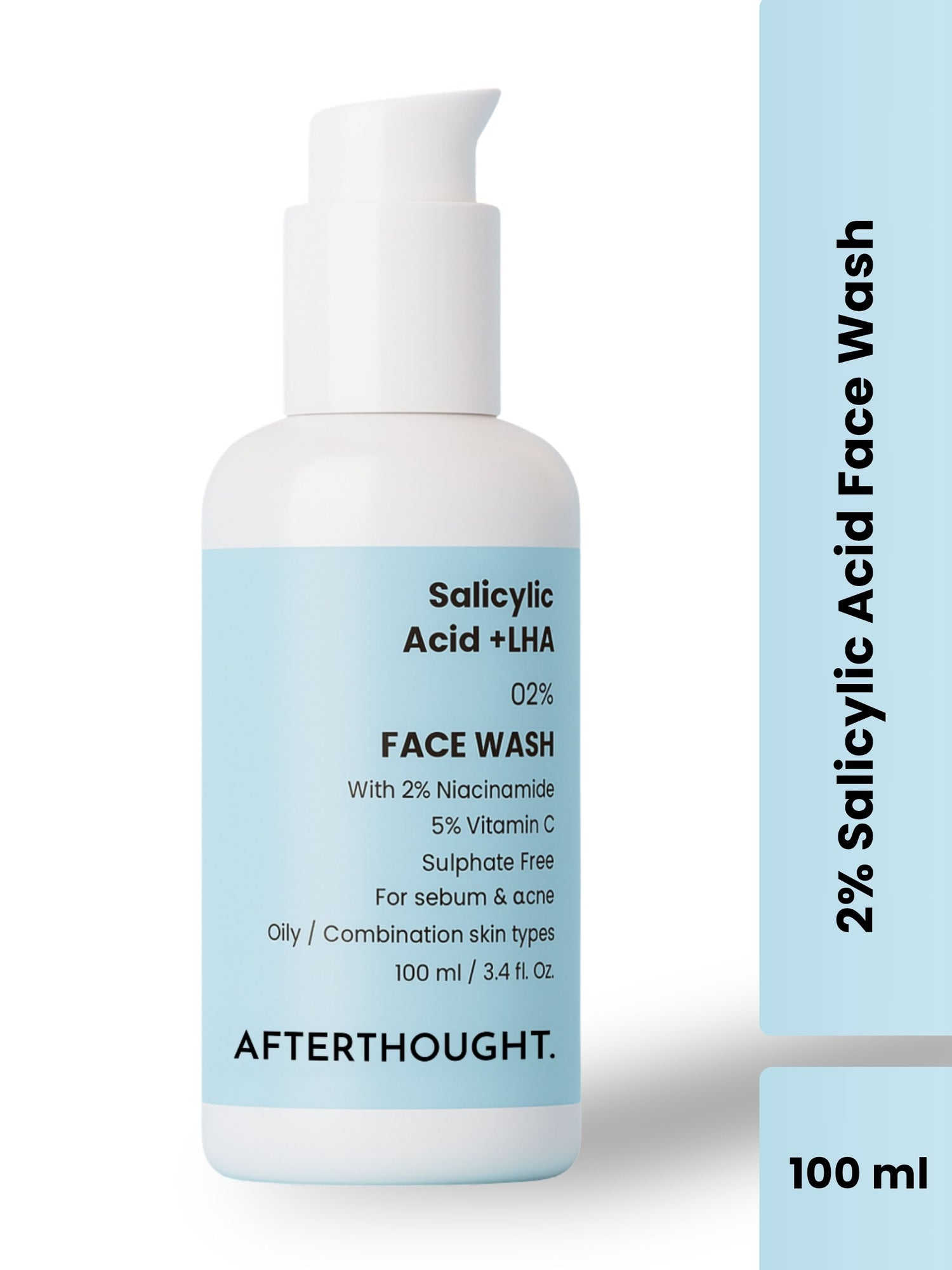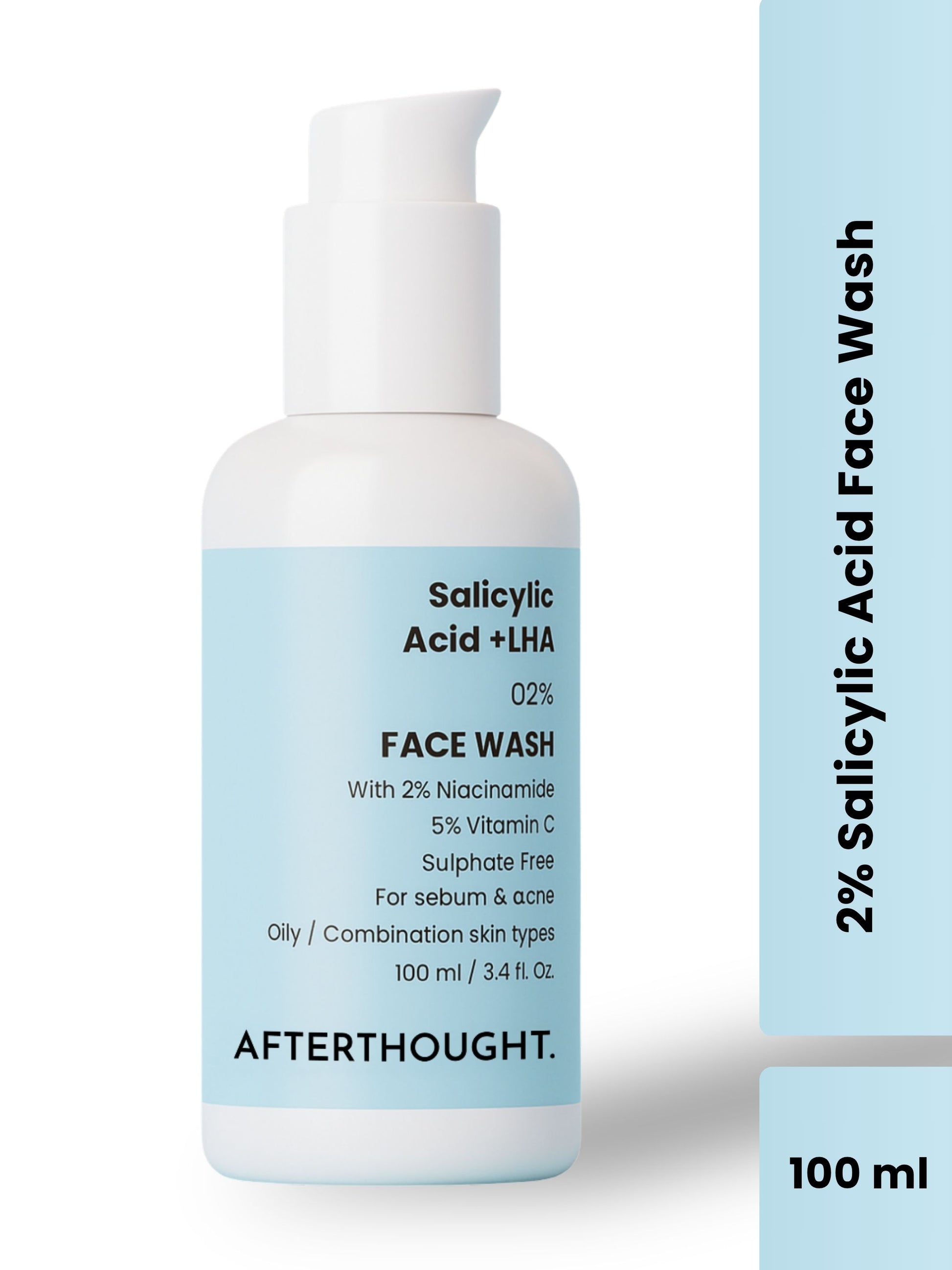What Is Foaming Face Wash?
Welcome to Afterthought. In the world of skincare, the variety of products available can be overwhelming. Among the myriad of choices, foaming face wash has gained significant popularity for its unique texture and effective cleansing properties.
This blog will delve into what foaming face wash is, its benefits, how to use it properly, and tips for selecting the right one for your skin type.
What is Foaming Face Wash?
Foaming face wash is a type of facial cleanser that dispenses a rich, bubbly foam when applied. This foam is generated either directly from the bottle through a pump mechanism or by lathering a small amount of liquid or gel cleanser in the hands. The foamy texture helps to remove dirt, oil, makeup, and other impurities from the skin, leaving it feeling fresh and clean.
Benefits of Using Foaming Face Wash
- Deep Cleansing: The foam penetrates the pores effectively, lifting out dirt and oil that can lead to acne and blackheads. This makes foaming face wash particularly beneficial for those with oily or acne-prone skin.
- Refreshing Experience: The light, airy texture of the foam provides a refreshing sensation on the skin, making it a pleasant addition to any skincare routine.
- Convenience: Many foaming face washes come in pump bottles, making them easy to use and reducing the mess often associated with other types of cleansers.
- Gentle on Skin: Despite its deep cleansing properties, foaming face wash is often formulated to be gentle on the skin, making it suitable for daily use.
- Improved Skin Texture: Regular use can help to improve the overall texture and appearance of the skin by keeping it free from impurities and excess oil.
How to Use Foaming Face Wash
Using a foaming face wash correctly ensures you get the maximum benefits without causing irritation or dryness.
- Preparation: Start by wetting your face with lukewarm water. This helps to open up the pores, allowing the cleanser to penetrate more effectively.
- Dispense the Foam: If using a pump bottle, dispense a small amount of foam into your hand. If using a liquid or gel form, apply a small amount to your palms and rub together to create foam.
- Application: Gently massage the foam onto your face using circular motions. Focus on areas that tend to be oilier or prone to breakouts, such as the forehead, nose, and chin.
- Rinse: Thoroughly rinse your face with lukewarm water, ensuring all traces of the cleanser are removed.
- Pat Dry: Gently pat your face dry with a clean towel. Avoid rubbing, as this can irritate the skin.
- Follow Up: Apply your usual skincare products, such as toner, serum, and moisturizer, to lock in hydration and further protect your skin.
Choosing the Right Foaming Face Wash for Your Skin Type
Selecting the appropriate foaming face wash is crucial to addressing your skin’s specific needs.
- Oily Skin: Look for a foaming face wash that contains ingredients like salicylic acid or tea tree oil, which help to control excess oil and prevent breakouts.
- Dry Skin: Opt for a hydrating foaming face wash that includes ingredients like hyaluronic acid or glycerin to maintain moisture levels and prevent dryness.
- Combination Skin: A balanced foaming face wash with gentle ingredients can help manage both oily and dry areas of the skin.
- Sensitive Skin: Choose a fragrance-free, hypoallergenic foaming face wash with soothing ingredients like aloe vera or chamomile to minimize irritation.
- Normal Skin: If you have normal skin, you can use a variety of foaming face washes. Focus on ones that maintain the skin’s natural balance and provide a refreshing cleanse.
Common Ingredients in Foaming Face Wash
Understanding the ingredients in your foaming face wash can help you make an informed choice.
- Surfactants: These are the primary cleansing agents that help to remove dirt and oil. Common surfactants include sodium lauryl sulfate (SLS) and sodium laureth sulfate (SLES). While effective, some surfactants can be drying, so look for milder alternatives if you have sensitive skin.
- Humectants: Ingredients like glycerin and hyaluronic acid attract moisture to the skin, helping to keep it hydrated.
- Exfoliants: Gentle exfoliating ingredients like salicylic acid can help to unclog pores and prevent acne.
- Soothing Agents: Ingredients like aloe vera, chamomile, and green tea extract can help to calm and soothe the skin.
- Antioxidants: Vitamins C and E, as well as green tea extract, provide antioxidant protection, helping to combat free radicals and environmental damage.
Conclusion
Foaming face wash is a versatile and effective cleanser that can benefit a wide range of skin types. By understanding its benefits, proper usage, and how to choose the right product for your skin, you can incorporate this popular skincare item into your routine to achieve a clean, refreshed, and radiant complexion. Remember to always patch test new products and consult with a dermatologist if you have any concerns about your skin’s reaction to a new cleanser.
Check : 2% Salicylic Acid + 5% Vitamin C Face Wash & Cleanser









